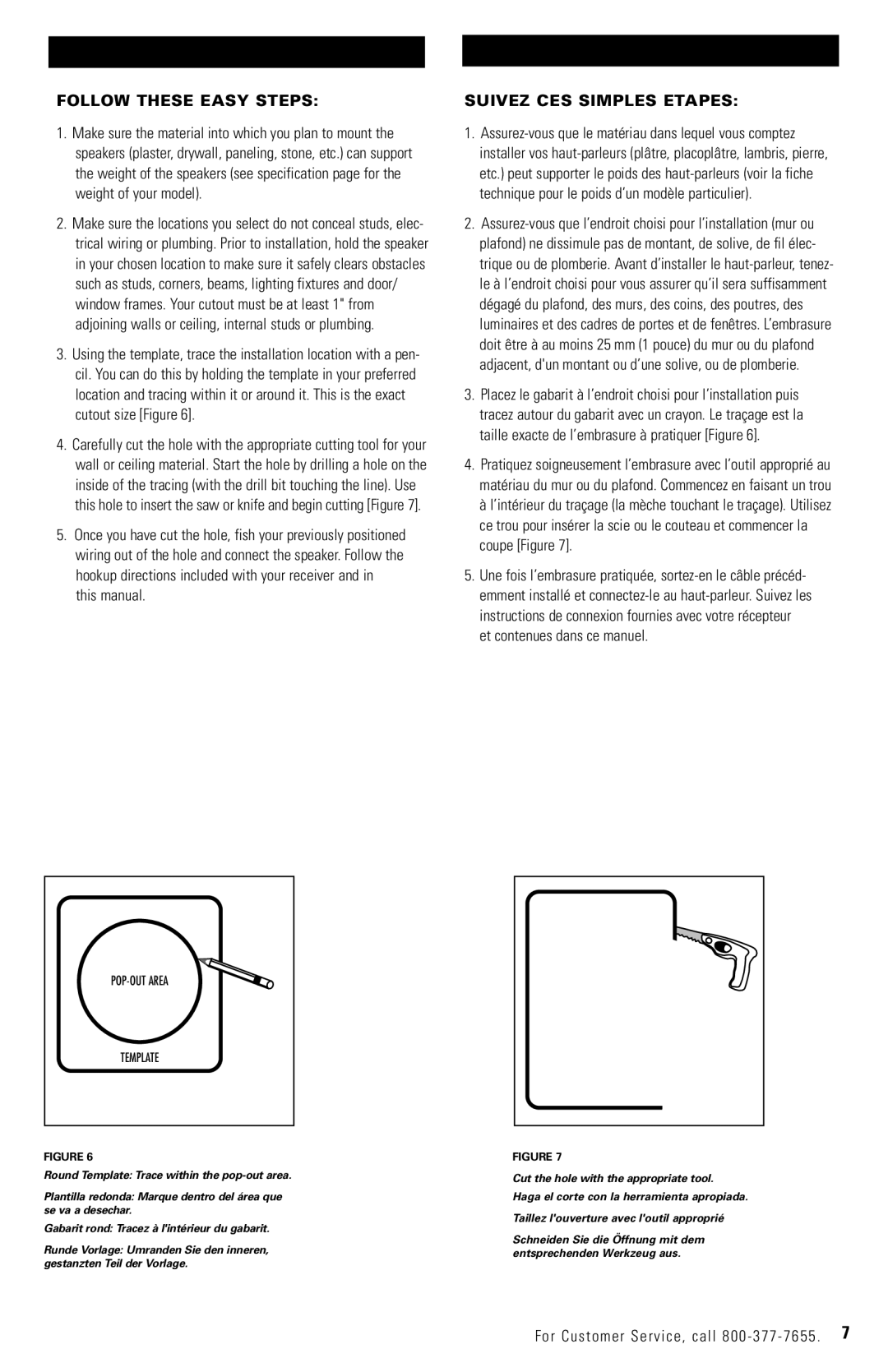RC6S specifications
The Polk Audio RC6S is a high-performance in-wall speaker designed to deliver exceptional sound quality while seamlessly integrating into your home environment. A part of Polk's extensive range of architectural speakers, the RC6S is designed for both audiophiles and casual listeners who appreciate premium audio without compromising on aesthetics.One of the standout features of the RC6S is its innovative driver technology. It boasts a 6.5-inch Dynamic Balance composite driver that provides rich and detailed midrange and bass frequencies. This is complemented by a 1-inch silk dome tweeter that enhances high-frequency response, delivering clear and crisp sound quality across a wide frequency range. The combination of these elements allows the RC6S to reproduce music and dialogue with remarkable detail, making it an ideal choice for both home theaters and multi-room audio systems.
The RC6S also incorporates Polk's patented Power Port bass venting technology. This advanced design enhances the low-frequency response of the speaker, providing deeper, punchier bass without distortion. The Power Port technology allows for a smoother transition between the bass and midrange frequencies, resulting in a more dynamic listening experience.
Installation is made straightforward with the RC6S. It features an easy-to-install design, complete with a cut-out template and simple mounting clamps, enabling seamless integration into drywall and ensuring a secure fit. The low-profile grille can be painted to match your decor, allowing it to blend into any room without drawing attention.
In addition to its performance and design, the RC6S is engineered to be versatile. Whether you're listening to music, watching movies, or hosting parties, this speaker delivers a balanced and engaging soundstage. It is also compatible with other Polk Audio speakers, allowing for easy expansion of your audio system.
Durability is another notable characteristic of the RC6S. It is built with high-quality materials, ensuring long-lasting performance and reliability, even in challenging environments. The speaker is also moisture-resistant, making it suitable for use in humid areas like bathrooms or kitchens.
In summary, the Polk Audio RC6S is a premium in-wall speaker that combines advanced technology, high-quality sound reproduction, and versatile design. With features designed for both audiophiles and casual listeners alike, it represents a significant addition to any home audio system, offering a clean, unobtrusive aesthetic without sacrificing performance.

